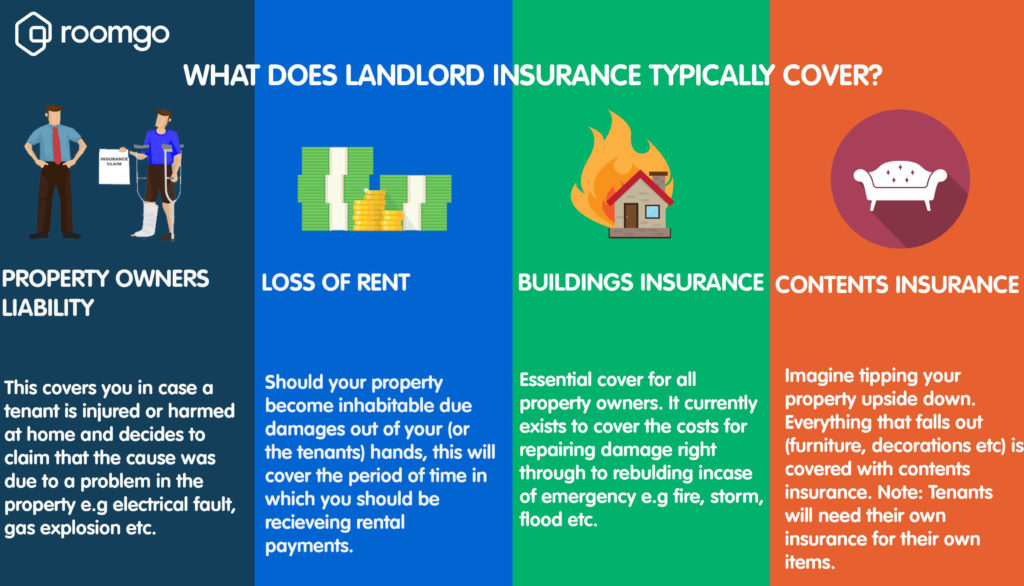If you’re renting out a property, having the right insurance is critical to protect yourself as a landlord. While a homeowner’s insurance policy might cover your primary residence, the moment you decide to rent out your property, you’ll need a different type of coverage—landlord insurance. But what does landlord insurance cover and why is it essential? This article breaks down everything you need to know.
Why Landlord Insurance is Necessary
Homeowner’s insurance does not cover rental properties. This means if your property gets damaged, or if a tenant or guest is injured on your property, you’re financially responsible. Landlord insurance, however, is specifically designed to protect rental property owners from risks associated with leasing out their property.
Failing to have landlord insurance could lead to significant issues, from paying out-of-pocket for damage repairs to covering medical or legal expenses. The peace of mind that landlord insurance offers is invaluable to property owners.
What Does Landlord Insurance Cover?
A comprehensive landlord insurance policy includes three core types of coverage that ensure your property and finances are well-protected. Here’s a closer look:
1. Property Damage
One of the most critical aspects of landlord insurance is coverage for property damage. This protects you in case your rental property or its contents (like furnishings in a furnished rental) are damaged by:
- Natural disasters (fire, storms, earthquakes)
- Vandalism
- Irresponsible tenants who cause serious damage
- Electrical or gas malfunctions
When choosing property damage coverage, opt for policies that cover the replacement cost rather than the actual cash value. The replacement cost allows you to repair or replace damaged property without considering depreciation, which is especially important if the property has aging fixtures or contents.
2. Lost Rental Income (Rental Default Insurance)
If your rental property becomes temporarily uninhabitable due to damage or other issues (such as mold, pest infestations, or other structural problems), landlord insurance can compensate you for the rent you would have earned. This ensures your cash flow remains steady while the property undergoes repairs.
For example, if your tenants are forced to vacate due to a flooding incident requiring extensive repairs, your policy would cover the rental income lost during that period.
3. Liability Protection
Liability coverage protects you against legal and medical expenses if someone gets injured on your rental property due to an issue you’re responsible for. Common situations include:
- A visitor slipping on an icy walkway
- Injury caused by structural damages, such as a collapsing stair or deck
- Other hazards like falling debris
This coverage ensures you’re not held personally responsible for expensive lawsuits or hospital bills.
Additional Coverage Options
Beyond the core features, landlords can customize their policies with riders, or add-ons, depending on their specific needs. Some common riders include:
1. Guaranteed Income
If a tenant fails to pay rent (or skips out entirely), guaranteed income insurance can cover their missed payments. This ensures you don’t suffer financially when dealing with unreliable tenants.
2. Flood Insurance
Standard landlord insurance policies don’t typically cover flood damage caused by natural disasters. If your property is in a flood-prone area, adding this coverage is crucial.
3. Emergency Coverage
Should a tenant lock themselves out or require urgent repairs (like fixing a broken water pipe), this feature can help cover the travel and service costs of resolving the issue.
4. Additional Construction Costs
Sometimes, repairing the damage isn’t enough—you may need to meet updated building codes. This add-on covers the costs of bringing your property up to code after damage.
5. Acts of Vandalism or Theft
If a tenant or an intruder damages your property intentionally or steals furnishings, this optional coverage can help minimize financial losses.
How Much Does Landlord Insurance Cost?
On average, landlord insurance costs about 15% more than a typical homeowner’s insurance policy. The annual cost can vary based on factors like:
- The property’s location
- The age and condition of the building
- Whether it’s short-term or long-term rental
- The level of coverage you select
For instance, properties rented out for short-term periods (like vacation homes) often have higher premiums because short-term tenants are deemed higher risk. Bundling your landlord insurance with existing homeowner’s insurance policies from the same insurer may help you secure a discount.
How Landlord Insurance Differs from Other Policies
It’s important to understand the difference between landlord insurance, homeowner’s insurance, and renter’s insurance:
- Homeowner’s Insurance only covers owner-occupied properties. It doesn’t apply to homes rented out to tenants.
- Renter’s Insurance is for tenants and covers their personal belongings as well as liability for damages they cause.
- Landlord Insurance specifically protects the property owner, covering the physical building, rental income, and liability risks.
Preparing to Insure Your Property
If you’re ready to rent out your property, here’s what to consider before getting landlord insurance:
- Review your current homeowner’s policy to confirm it won’t cover rental activities.
- Assess the specific risks for your rental property, such as flooding or tenant-related damages.
- Consult with insurance providers to ensure you get the right coverage for your rental property and add any necessary riders based on your unique needs.
The Bottom Line
Landlord insurance is a must-have for property owners renting out their homes, apartments, or vacation rentals. It provides comprehensive protection against property damage, lost rental income, and liability claims, ensuring peace of mind as you manage your investments.
Want to rent your property with confidence? Start by securing the right landlord insurance—and enjoy the security of knowing you’re covered no matter what happens.








